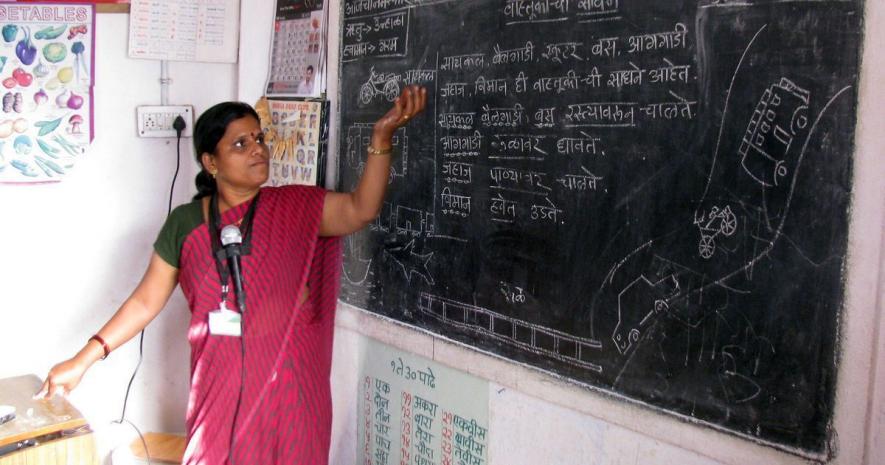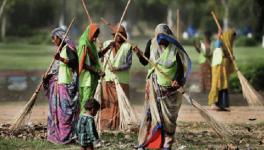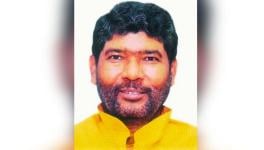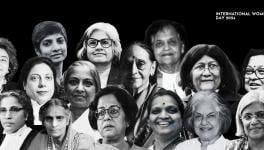Women Still Under-Represented in Indian Academia

Representational Image. Image Courtesy: Flickr
The rise in higher education enrolment and the gender equality initiatives implemented by the government of India notwithstanding, women still lack representation in higher education institutions.
This article explores the reports of the All India Survey on Higher Education (AISHE), conducted by the Ministry of Education, aimed at collecting comprehensive data on various aspects of higher education in the country.
By shedding light on the persistent under-representation of women in academia, this writer seeks to prompt dialogue, inform policy interventions, and inspire concerted efforts towards fostering a more inclusive and equitable academic environment in India.
Higher educational institutions play a crucial role in promoting gender equality and creating an inclusive society. This role becomes even more significant when these institutions have equal representation of females in leadership positions like head, dean or vice-chancellor. These women can ensure a gender balance approach towards the promotion of quality higher education and research. However, the literature suggests that due to various economic and social factors, trends in females choosing leadership positions in higher educational institutions have been very low despite educational expansion.
According to the UNESCO Report 2021 on 'Women in Higher Education: Has the female advantage put an end to gender inequalities?', there is a lack of women at the top and among academicians and researchers. Though women are over-represented among teaching staff at lower educational levels, their presence declines in tertiary education worldwide.
In India, the report published by the Ministry of Education says that the number of females working as schoolteachers has surpassed the figures of their fellow male teachers at the primary level in 2019-20. However, as per the aforesaid report, male teachers continue to outnumber female teachers from the upper primary level onwards.
The decision and the ability of females to participate in the labour force as university teachers is not just a matter of choice but the outcome of various economic and social factors that interact in a complex fashion at both the household and macro level. However, one of the most important drivers which enable females to join as university teachers is the attainment of quality higher education and research.
Access to higher education is measured in terms of the Gross Enrolment Ratio (GER), which is calculated as the ratio of persons enrolled in higher education institutions to the total population of persons in the age group of 18 to 23 years.
According to the AISHE report, GER for the male population has improved from 22.7% in 2012-13 to 28.3% in 2021-22 and for the female population from 20.1% to 28.5% at all India levels during the same period. Due to the significant increase in GER, female students became higher than of male students for the first time in 2019-20.
It's commonly assumed that women, upon graduation, can pursue advanced degrees to access academic positions, engage in research, assume leadership roles, and earn salaries comparable to their male counterparts. However, this assumption hasn't held true.
According to AISHE for 2021-22, the total number of teachers (Professor, Associate Professor, Assistant Professor, Demonstrator, Temporary Teachers and Visiting Teachers) are approximately 16 lakh, of which 43% are female.
The teachers in higher education may be further segregated into university-level, college-level, and stand-alone institutions. The stand-alone institutions generally run Diploma/PG Diploma-level programmes that require recognition from one or other Statutory Bodies. The total number of teachers at the university level is around 2.50 lakh, of which 38.4% are females. At the College level, the number of teachers is approximately 11.8 lakh, of which 44.4% are female. To provide a broader picture, the analysis is based on the total number of teachers in higher education institutions, including stand-alone institutions.
As per the report, the lowest gender proportion is recorded in Bihar, where the total number of teachers in higher education is approximately 38,000, of which only 24% were female teachers in 2021-22. Jharkhand has the second lowest gender proportion, with 30.5% female teachers in universities and colleges.
At the same time, states like Kerala, Punjab, Haryana, Chandigarh, Meghalaya, Nagaland, Delhi and Goa have more female teachers than male teachers. The distribution of male and female teachers in universities and colleges is presented in the following diagram/chart. The figure below details gender proportion in teaching positions, especially at the levels of professor, associate professor, and assistant professor.
The diagram above illustrates that the representation of female Assistant Professors in higher education is notably low, and this proportion decreases even further for more advanced positions such as Associate Professor and Professor. At the India level, 44.41% of Assistant Professors are female, but these numbers further decreased to 37.85 and 29.52% at the position of Associate Professor and Professor, respectively, in 2021-22.
There is a significant increase of roughly 4% share of female academicians at all levels during 2011-12 to 2021-22. However, the disparity in female representation in the positions of associate professor and professor has remained largely unchanged.
This indicates that there is a delay in the promotion of female university teachers compared to their male counterparts. Such delay in promotions to higher posts is often because the female faculty members lose seniority in the process of marriage and pregnancy, apart from discrimination in the selection process. Since females get relatively lower opportunities to get promotions as associate professors and professors, they also lose certain privileges associated with higher positions.
Higher educational institutions have competitive environments that demand long work hours to meet publication, participation in workshops/seminars, and entrepreneurial and other requirements in order to get selection and promotion on time.
These work-intensive requirements appear to be less female-friendly due to the social constraints and gender-related barriers. These gender-neutral requirements often create problems in maintaining work-life balance for females, which may result in penalties for female faculty.
Therefore, unless structural changes are implemented within universities, development in gender equality will be very slow. Gender equality issues must be embedded in work practice, and females' career progression should be supported by promotion criteria that allow for career breaks and part-time work by focusing more on quality than the number of publications and grant awards.
The writer is an Assistant Professor (Electronics) at LS College, BRA Bihar University, Muzaffarpur. The views are personal.
Get the latest reports & analysis with people's perspective on Protests, movements & deep analytical videos, discussions of the current affairs in your Telegram app. Subscribe to NewsClick's Telegram channel & get Real-Time updates on stories, as they get published on our website.
























